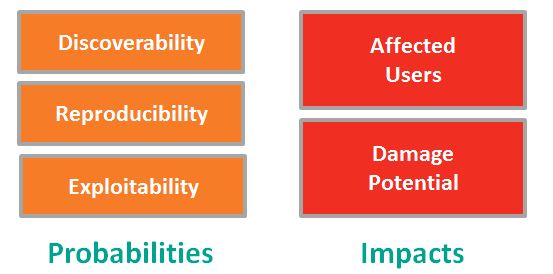Coordinated Response
Services and tools for incident response management
Threat and Impact Assessment with DREAD
DREAD – Damage Potential, Reproducibility, Exploitability, Affected Users, and Discoverability – is used to quantify risk, but it may prove useful for incident impact assessment.
DREAD is a classification scheme for quantifying, comparing, and prioritizing the amount of risk represented by a specific threat. The DREAD scheme is described in Writing Secure Code, 2nd Edition, Howard, M. and LeBlanc, D. Microsoft Press 2003 and is used by Microsoft. DREAD is also promoted by the Open Web Application Security Project (OWASP) on their site: Threat Risk Modeling.
In the diagram above and in the definitions below, the “D”s are reordered to group the elements of DREAD into logical categories: Probabilities and Impacts.
Threat Probabilities:
How easy is it to (1) Discover a vulnerability, (2) Exploit a vulnerability, and (3) Reproduce the Exploit? In DREAD these are rated on a scale of 0 (very hard or impossible) to 10 (easy with limited tools or skills).
Threat Impacts:
Affected Users are measured from 0 (none) to 5 (Some users, but not all) to 10 (all users). Damage Potential is measured from 0 (no damage from exploit) to 5 (individual user data is compromised) or 10 (complete system or data destruction or compromise).
Risk Measure:
Add the 5 metrics and divide by 5. The result is a scale of 0 (not likely with limited impact) to 10 (highly likely with serious impact). Obviously, higher risk requires additional mitigation or avoidance might be required.
Incident Response and Risk Assessment
It’s worth stressing that the impact component of the risk assessment can and should be used during the Incident Impact Assessment. The Response Team needs to know how many users are affected, how much data or how many systems have been compromised, destroyed or disabled.
With this information the response team makes informed decisions on what resources to apply and what actions to take.
In an Incident postmortem review, the questions about the vulnerability should be reviewed: discoverability, reproducibility, and exploitability (again).


